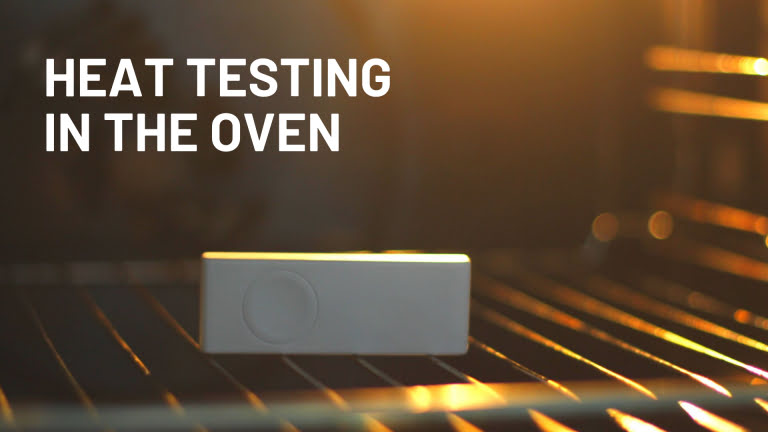SimplePack is a universal Sigfox-enabled device that integrators can build their IoT solutions upon. Our goal to build various scenarios and test the devices under different conditions in order to push the limits and see the outcomes.
This time we have done heat testing. The purpose of the project was to check if the device is going to work in extreme conditions or not and how. We wanted to test:
Case heat resistance
Battery heat resistance
Radio performance
The device case is an ABS plastic – thermoplastic polymer. Around 105-110°C, the plastic should start the so-called glass transition, which will, in theory, make the plastic easier to bend, stretch, and generally mold. One of the results we were expecting was the case deforming, which indeed happened, as you can read below in the results.
The battery part was trickier as we use LiMnO2 batteries. Now heating the battery to more than 100°C would, in theory, increase internal pressure and could result in the battery swelling or worse… Exploding. Our bravery was stronger than our survival instinct, so we decided to put the SimplePack into our office oven and continuously increase the temperature by 10 degrees Celsius every 10 minutes.
Radio performance was not expected to change much, the only thing that could theoretically make it worse was the antenna performing worse when heating, so we wanted to try this out as well.
The device was placed in the oven at 60 degrees Celsius and the temperature was slightly increased for an hour – every 10 minutes, the temperature was raised by 10 degrees, as we mentioned. It wasn’t until 100°C+ that the case started deforming (as expected) and at 120 degrees, the plastic case was a bit melted (but not in a way that would not make it impossible to use the device again – just the button and the area around it crackled, which made it harder to keep the button pressed for a consistent amount of time when the device cooled down, but the antenna was working properly, sending and receiving messages without any problems.
Device settings – since we only needed regular temperature updates, we have used Press me mode with enabled heartbeat messages with appended temperature every minute. The purpose of this test was to see device behavior in extreme conditions, not collecting any type of data or monitoring environmental changes. You can use the results of our test to decide whether or not will our device cover your specific use case – the temperature can be worked with in many ways, you can get notified of thresholds crossed and temperature changes by X degrees or you can receive regular updates.
As for the results, here’s a little table:
| Temperature | Case behavior | Battery | Transmissions |
| 60°C | No change | No change | No change |
| 70°C | No change | No change | No change |
| 80°C | No change | No change | No change |
| 90°C | No change | No change | No change |
| 100°C | Plastic visually less rigid | No change | No change |
| 110°C | The area around button starts deforming | No change | No change |
| 120°C | The area around the button deformed (bubble-shaped deformation, 4mm in diameter with 1mm height). | No change | No change |
The device will not send you precise temperature around these heat levels as the API 6 firmware only supports temperature encoding up to 87,5 degrees Celsius. If your use case needs precise data, the recommended maximum working range we’d suggest you use the device to monitor is 60-70°C.
So when it comes to use cases such as fire prevention and wildfire notification, the device can be trusted to report the rapid temperature change reliably. Think of how fast the fire spreads and how quickly the temperature rises when setting the device up (especially the temperature measurement period register).
To conclude our little experiment – because the battery didn’t swell (or explode!), we were pleasantly surprised as the results were better than expected. We are now sure there are even more use cases our universal IoT sensor can cover!

Want to learn even more? Check out more use cases here.
Best wishes
Simple Hardware team